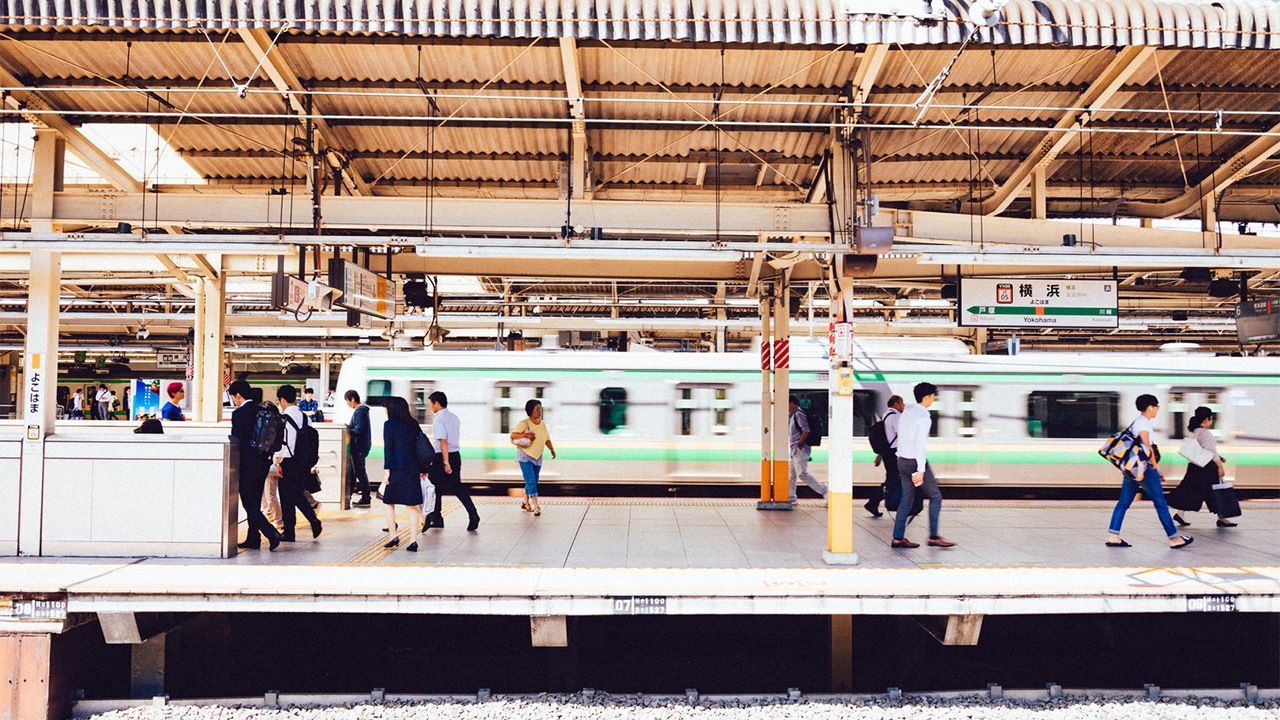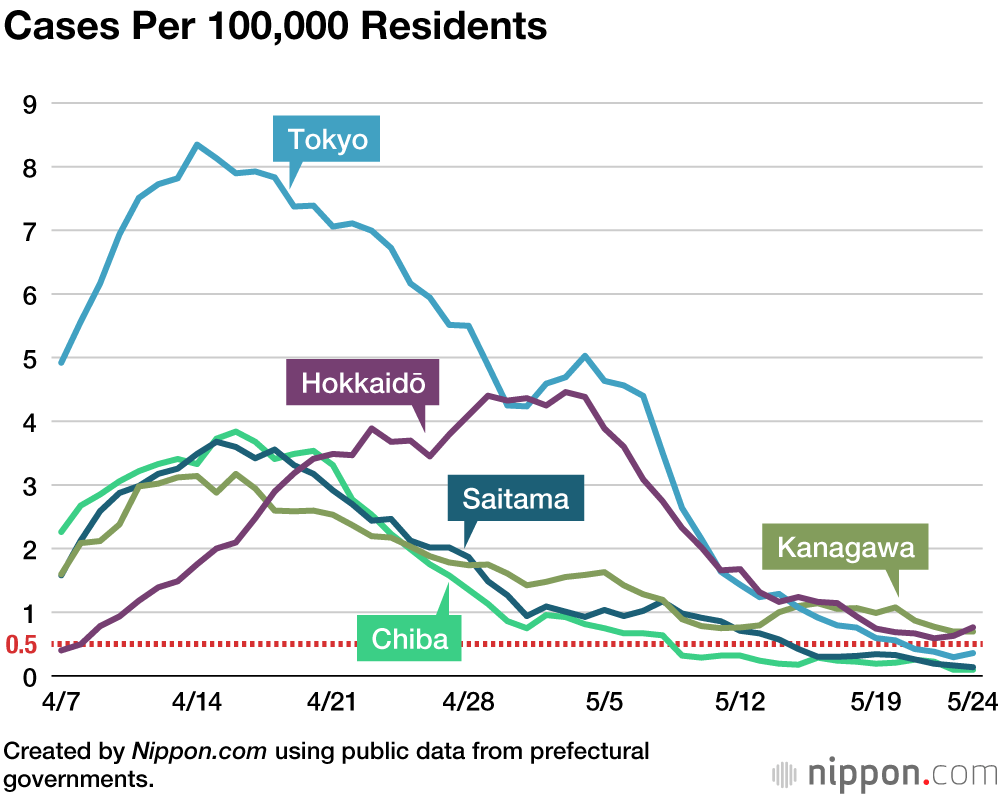
Coronavirus Crisis: Japan Lifts State of Emergency in Remaining Five Prefectures
Health Society Lifestyle- English
- 日本語
- 简体字
- 繁體字
- Français
- Español
- العربية
- Русский
On May 25, the government lifted the COVID-19 state of emergency in the five remaining prefectures of Hokkaidō, Tokyo, Kanagawa, Saitama, and Chiba.
The state of emergency was initially declared on April 7 in eight prefectures: Tokyo and its three neighbors, three Kansai prefectures, and Fukuoka. On April 16, it was expanded nationwide, before being partially lifted in stages on May 14 and 21.
The government set a per-prefecture target for lifting the state of emergency of 0.5 or fewer total cases per 100,000 people over the past week. In Tokyo, this had reached as high as 8 on April 14 and 15, but efforts to work from home, refrain from unnecessary trips, and avoid high-risk situations have had a clear effect, particularly from May.
While Hokkaidō and Kanagawa still have not met the 0.5 target, their robust medical systems are among factors influencing the government decision.
COVID-19 and Japan: A Timeline
| May 31 | Original planned end of extended state of emergency. |
| May 25 | State of emergency lifted in prefectures of Tokyo, Kanagawa, Saitama, Chiba, and Hokkaidō. |
| May 21 | State of emergency lifted in prefectures of Osaka, Hyōgo, and Kyoto. |
| May 21 | Global cases rise above 5 million. |
| May 14 | State of emergency lifted in 39 prefectures. |
| May 11 | Cases in Tokyo rise above 5,000. |
| May 6 | Original planned end of state of emergency. |
| May 4 | Nationwide state of emergency extended to May 31. |
| May 4 | Global cases rise above 3.5 million. |
| May 2 | Fatalities in Japan rise above 500. |
| April 30 | Supplementary budget including ¥100,000 payments to all residents enacted. |
| April 28 | Cases in Tokyo rise above 4,000. |
| April 18 | Cases in Japan rise above 10,000. |
| April 16 | State of emergency expanded nationwide. |
| April 14 | Ceremonial investiture of Crown Prince Fumihito postponed. |
| April 12 | Cases in Tokyo rise above 2,000. |
| April 11 | Global fatalities rise above 100,000. |
| April 7 | State of emergency declared in the prefectures of Tokyo, Kanagawa, Saitama, Chiba, Osaka, Hyōgo, and Fukuoka. |
| March 30 | Tokyo Governor Koike Yuriko calls on residents to refrain from attending karaoke outlets, concert venues, bars, and nightclubs. |
| March 29 | Comedian Shimura Ken dies of COVID-19. |
| March 25 | Tokyo Governor Koike urges residents to refrain from going outside at the weekend, warning of the danger of an explosive rise in infections. |
| March 24 | The Tokyo Olympics and Paralympics are postponed until 2021. |
| March 13 | The enactment of new legislation makes it possible to declare a state of emergency over COVID-19. |
| March 11 | The World Health Organization declares that the COVID-19 outbreak is a pandemic. |
| February 28 | Hokkaidō declares a state of emergency, calling on residents to refrain from leaving home on the weekend. The state of emergency lasts until March 19. |
| February 27 | Prime Minister Abe calls for the closure of all Japanese elementary, junior high, and high schools from March 2. |
| February 3 | The cruise ship Diamond Princess arrives in Yokohama. Many infections are later discovered on the ship. |
| January 16 | The Ministry of Health, Labor, and Welfare announces the first case in Japan. |
(Originally published in Japanese. Banner photo: © Pakutaso.)
